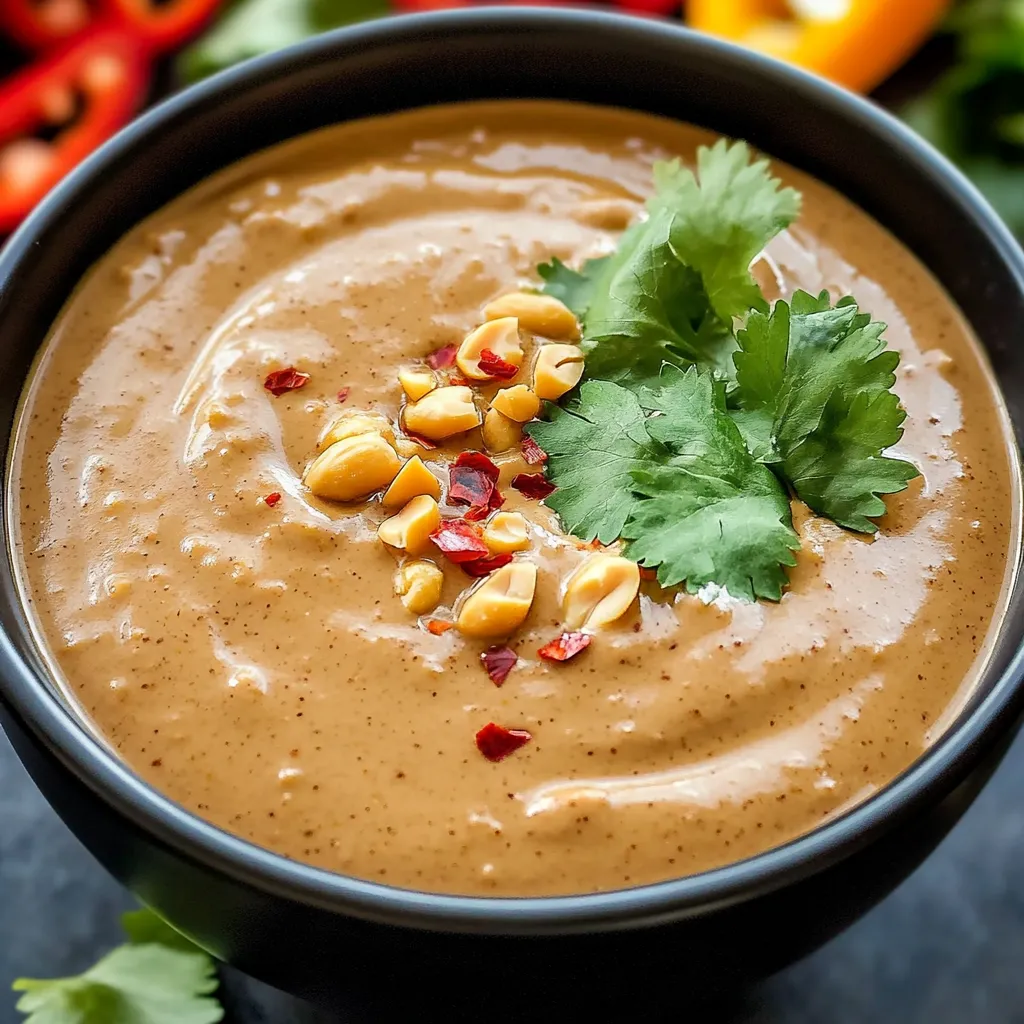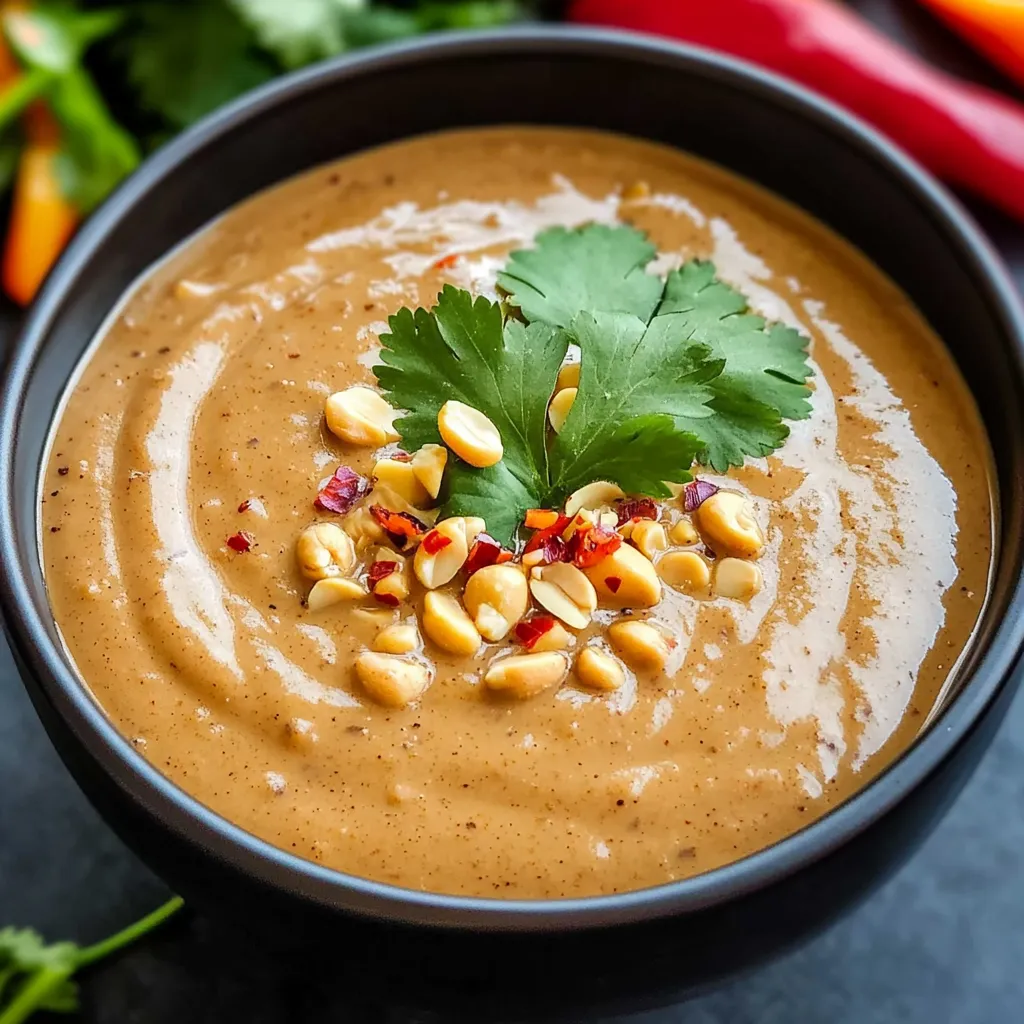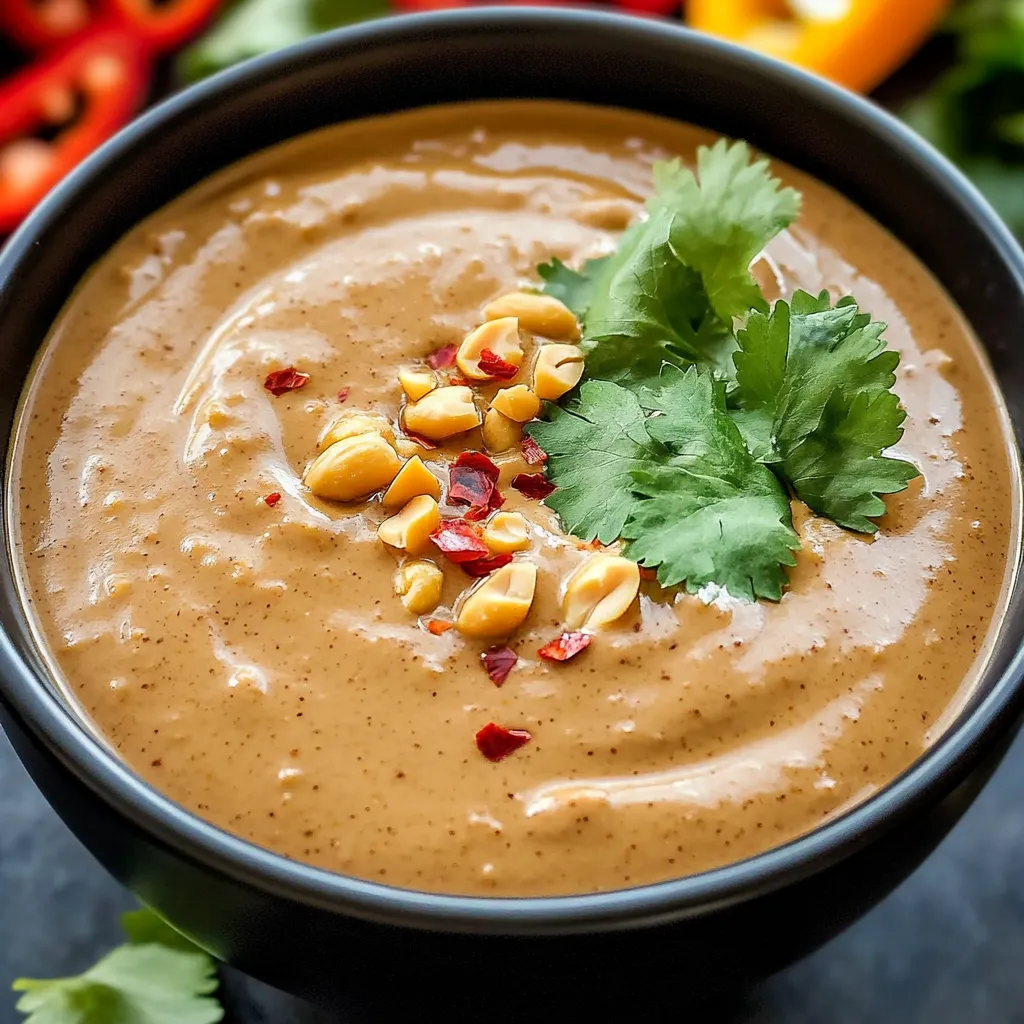 Pin it
Pin it
The moment this velvety sauce touches your tongue, an explosion of sweet, savory, tangy, and spicy notes dance across your palate. After years of trying to recreate my favorite restaurant's version, this recipe has become my kitchen MVP – ready to transform everything from plain vegetables to simple noodles into something extraordinary. What makes it special isn't just the perfect balance of flavors, but how versatile it is – working equally well as a dipping sauce, marinade, or dressing. I keep a jar in my refrigerator at all times, ready to rescue even the most ordinary meal with its creamy, complex goodness.
Last week, I drizzled this sauce over roasted vegetables that were on the verge of being forgotten in my refrigerator. My teenager, who normally avoids anything vegetable-related, asked for seconds and then used bread to wipe his plate clean of every last drop of sauce!
Essential Elements
- Creamy Peanut Butter: The foundation that provides richness and body
- Soy Sauce: Delivers essential umami depth and saltiness
- Fresh Lime Juice: Adds brightness that balances the richness
- Sweetener: Honey or maple syrup rounds out the flavor profile
- Sesame Oil: Contributes nutty complexity that elevates the sauce
- Warm Water: Controls the consistency for perfect texture
Creating Sauce Magic
- Balance Your Flavors:
- Start with peanut butter as your creamy base. Add soy sauce for saltiness and umami. Include lime juice for essential acidity. Incorporate sweetener to round out sharpness. Add spice element to personal preference.
- Achieve Perfect Consistency:
- Begin with thicker mixture of main ingredients. Add warm water gradually, one tablespoon at a time. Whisk continuously until completely smooth. Adjust thickness based on intended use. Allow to stand briefly for flavors to meld.
- Customize to Your Taste:
- Taste throughout the process, not just at the end. Adjust sweetness, acidity, or heat as needed. Consider optional add-ins like fresh ginger or garlic. Balance is key – no single flavor should dominate. Remember intensity increases as sauce sits.
- Optimize for Serving:
- For dipping, maintain thicker consistency. For dressing or drizzling, thin with additional water. Bring to room temperature before serving. Stir well if sauce has been refrigerated. Garnish with crushed peanuts or cilantro when appropriate.
 Pin it
Pin it
Storage Solutions
This sauce keeps beautifully, making it perfect for meal prep and impromptu flavor boosts. After preparing, transfer to a glass jar or airtight container and refrigerate for up to one week. The sauce will thicken considerably when chilled, which is perfectly normal. When ready to use, simply bring to room temperature for about 15-20 minutes, then add a splash of warm water if needed to restore the original consistency. Whisk vigorously or shake the sealed container to recombine any separated ingredients. While I don't recommend freezing this sauce due to potential texture changes, it's so quick to prepare that fresh batches are always just minutes away.
Perfect Pairings
The versatility of this sauce makes it a true kitchen workhorse. For appetizers, serve as a dipping sauce for fresh spring rolls, satay skewers, or crudité platters. As a main course component, drizzle over rice bowls with roasted vegetables, toss with cold noodles for a quick lunch, or use as a marinade for tofu, chicken, or shrimp before grilling. It makes an excellent salad dressing when thinned slightly with additional water or lime juice, especially for hearty grain salads with lots of crunchy vegetables. For a simple snack, spread on rice cakes or use as a dip for apple slices for a surprising sweet-savory combination that's surprisingly addictive.
Troubleshooting Tips
Even this straightforward recipe can occasionally present challenges. If your sauce separates or appears oily, the peanut butter may have been too cold - next time, let ingredients come to room temperature first, or briefly microwave the peanut butter. For sauce that's too thin, add additional peanut butter a teaspoon at a time until reaching desired consistency. If too thick, incorporate more warm water gradually. Should your sauce taste too salty, balance with additional sweetener and lime juice. For grainy texture, your peanut butter brand might be the culprit - try a different brand or blend the sauce in a food processor. Remember that flavors intensify over time, so a sauce that tastes perfectly balanced immediately might seem stronger after refrigeration.
 Pin it
Pin it
Conclusion
Ultimate Thai Peanut Sauce represents the beautiful intersection of convenience and culinary excitement in home cooking. It demonstrates how a few well-balanced ingredients can create something far greater than the sum of their parts, bringing global flavors into everyday meals with minimal effort. Whether you're looking to elevate a simple vegetable platter, create a satisfying quick lunch, or add excitement to your dinner rotation, this sauce delivers flavor that feels sophisticated yet remains accessible. As you discover its many applications in your kitchen, this recipe will likely earn its place in your regular rotation - the mark of any truly great sauce that stands the test of time.
Frequently Asked Questions
- → Can I use natural peanut butter instead of creamy peanut butter?
- Yes, you can use natural peanut butter, but keep in mind that it may have a different consistency and flavor. Natural peanut butter can be a bit more runny or oily, so you might need to adjust the amount of warm water accordingly to achieve your desired sauce thickness. Stir well to combine the separated oil before measuring!
- → What can I use instead of soy sauce for a gluten-free option?
- If you're looking for a gluten-free alternative, use tamari or coconut aminos instead of soy sauce. Both options will give you a similar umami flavor without the gluten, making this sauce suitable for those with gluten sensitivities!
- → How should I store leftovers?
- Store any leftover sauce in an airtight container in the refrigerator for up to a week. Just give it a good stir or whisk before using again, as it may thicken or separate slightly during storage.
- → Can I add additional ingredients for more flavor?
- Absolutely! You can enhance the flavor by adding ingredients like ginger (freshly grated or powdered), chopped cilantro, chopped green onions, or even a bit of coconut milk for extra creaminess. Just remember to adjust the liquid ingredients accordingly if you add more solids!
- → How can I make this sauce nut-free?
- For a nut-free version, substitute the peanut butter with sunflower seed butter (sunbutter). It offers a similar creaminess and works great for those with peanut allergies while maintaining the sauce's texture and quality.
- → Can I make this sauce vegan?
- Yes! Simply use maple syrup instead of honey as your sweetener. All the other ingredients in the recipe are already vegan-friendly, making this an easy adaptation for a plant-based diet.
